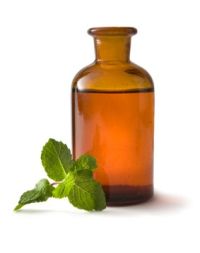What is Inflammation?
Inflammation is an immune response and is the body’s way of dealing with an injury or infection. It is a very natural process. Your body is constantly exposed to toxins, in the air, food, water, chemical reactions in the body ie emotional or physical and of course injury to the body’s tissues and food intolerances. When the body is overloaded with toxins and the liver is under too much pressure, they can leak through the mucous membranes resulting in catarrh or inflammation of the mucous membranes. These toxins or free radicals can also build up elsewhere in the body causing pain and infection and digestive problems.
Pain and inflammation almost always goes hand in hand. Inflammation is caused by injury or acidity and always causes degeneration and or pain. The fundamental key to reducing pain and inflammation is almost always to reduce acidity in your body. Our normal healthy pH levels internally are around pH 7.
What happens during acute inflammation?
When the body’s tissue has been damaged, the inflammation process begins within seconds. The damage may be from a physical injury, or caused by an immune response. Histamine is released causing blood vessels to dilate and become more porous allowing in more fluid and blood proteins into the interstitial spaces. White blood cells ie neutrophil, macrophages and lymphocytes, attack and ingest the foreign body. The inflamed area becomes painful as the nerve endings are stimulated to further protect the area. The area becomes red and hot to touch.
Chronic Inflammation
Chronic Inflammation is a long term inflammation which can last for several months. This occurs as a result of a failure to eliminate the root cause, stress or an auto immune response where the immune system is attacking it’s own healthy tissues. Examples are asthma, rheumatoid arthritis, chronic sinusitis, crohn’s disease, psoriases and fibromyalgia.

How do essential oils work?
Essential oils encourage a process known as phagocytosis which stimulates white blood cells to ingest and clean up micro-organisims. They are the highest know anti-oxidants substances which are vital to help soak up the free radicals and balance the acid/alkaline balance. The body can handle free radicals with anti-oxidants, however, excess free radicals can cause damage to cells and contribute to aging.
Essential oils for pain and inflammation are increasingly being used in the treatment of inflammatory diseases, such as allergy, rheumatism and arthritis. They also support the body’s first line of defence. The skin acts as a protective barrier and essential oils future support this action. When treating inflammation with essential oils, we also need to help detoxify the body, eliminating free radicals and also to help relieve pain. Essential oils with diuretic properties help to accelerate the detoxification process by stimulating the kidneys. Ie lemon, grapefruit, fennel and juniper berry. These oils will also stimulate the body’s ability to make more white blood cells.
Essential oils for anti-oxidant, analgesic and anti-Inflammatory properties
Eucalyptus has been traditionally used to clear congestion with symptoms associated with colds and flus. Diffusing eucalyptus can purify the air of harmful microorganisms.
Ginger can be used for arthritis, fatigue, muscular aches and pains, poor circulation and strains and sprains. It has a similar action to rosemary in that it stimulates the blood flow and warms the skin, bringing relief from pain and stiffness associated with inflammation.
Roman Chamomille helps sooth painful joints, muscular aches and pains, sprains, rheumatism and neuralgia. German chamomile contains chamazulene, a powerful anti-inflammatory, anti-allergy and cooling agent.
Rosemary is effective for muscular pain and rheumatism and stimulates the circulation. Do no use if you suffer with epilepsy or high blood pressure.
Peppermint is used to relieve irritated skin conditions and has a cooling effect on the skin and is an effective analgesic. Used for muscle aches and pains, respiratory and sinus congestion.
Tea tree is antiviral and antibiotic, it is a good oil to use when the skin is inflamed.
Thyme has probably the strongest anti-oxidant properties. It helps boost the immune system, has a warming effect and stimulates poor circulation.

How To Use Essential Oils with Carrier Oils
Carrier oils or base oils are used to dilute and to carry the essential oils into the body. Examples of carrier oils are almond, grapeseed or sunflower. Mix 6 drops of essential oil(s) to 1 tablespoon of carrier oil and rub into the body (3% blend for adults).
Safety
Always do a skin test before using an essential oil. Keep vegetable oil nearby in the case of sensitivity occurring on the skin. Never use water because oil and water do not mix. Children generally use about 1/3 of the adult blends.









